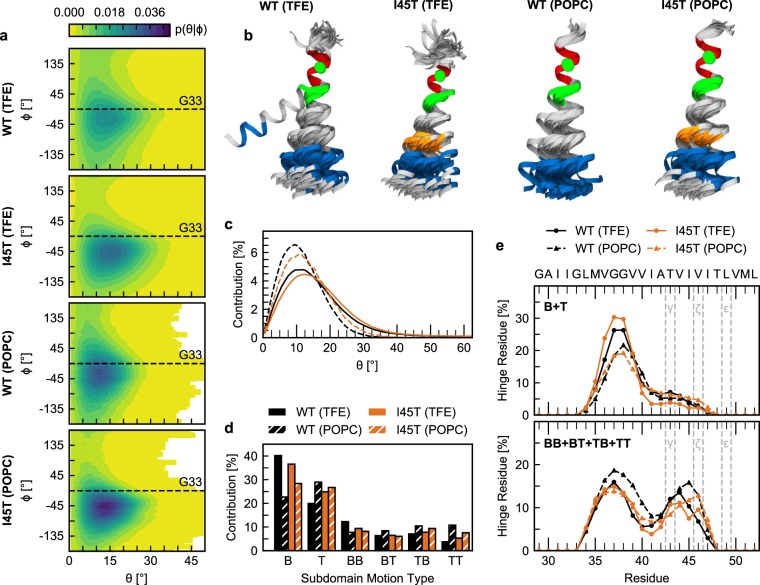Figure 3.
Collective TM-helix motions. (a) Bending (θ) and swivel (Φ) angles, which characterize the orientation of the ε-sites-carrying TM-C helix segment I47-M51 in relation to the TM-N segment I31-M35. (b) Representative conformations (overlaid at I31-M35) as determined by K-means clustering of θ and Φ angles (blue, TM-C segment I47-M51; red, TM-N segment I31-M35; orange, I45T mutation; green, G37 and G38; green sphere, Cα atom of G33). (c) Probability distributions of bending angles. (d) Probability of hinge motion types. Motions coordinated by a single hinge are referred to as type B and T, respectively. Motions around a pair of hinges are characterized by combinations of bending and twisting (BB, BT, TB, TT). (e) Probability by which a residue is identified as a hinge site in a single (B + T) and double-hinge (BB + BT + TB + TT) motion.

